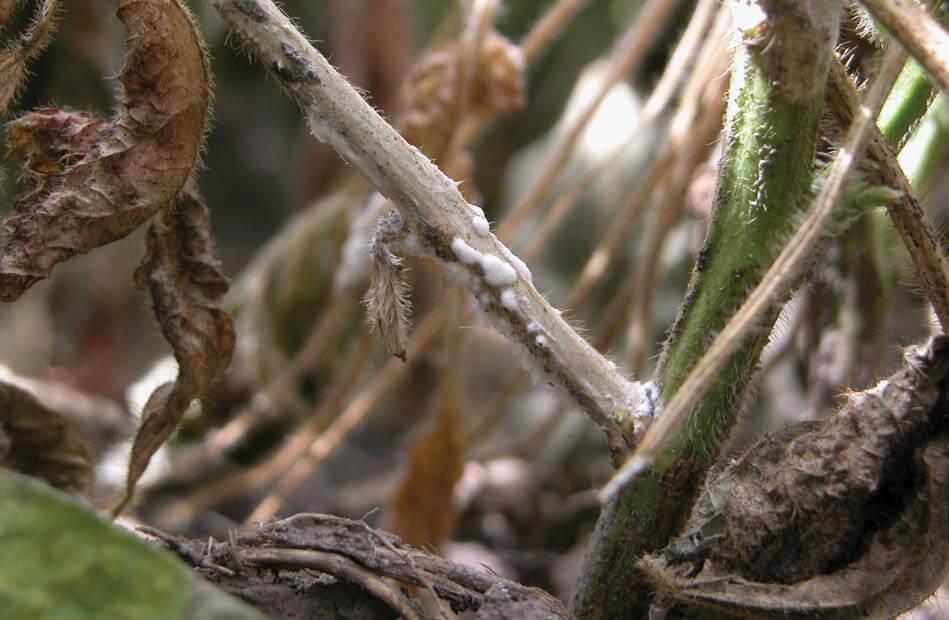The looming threat of white mold presents a substantial challenge for soybean farmers heading into the 2025 growing season. Plant pathologists warn that while precise pressure levels remain uncertain, swift action now could spell the difference between healthy yields and devastating losses. Weather patterns will undoubtedly influence disease development. The preparation you undertake today, however, stands as a cornerstone of effective management.
Understanding White Mold
White mold, scientifically known as Sclerotinia stem rot, manifests through distinctive symptoms that farmers should recognize. Initial signs appear as paper bag-brown-colored lesions typically forming on the middle to lower portions of the stem. As the disease progresses, white fuzzy growth becomes visible, accompanied by plant wilting. Eventually, infected plants may die completely.
Black, round, hard survival structures called sclerotia form inside and outside affected stems. These structures, resembling rat droppings, return to the soil during harvest and can remain viable for years. They often stick to combines, which inadvertently facilitates their spread across fields.
Critical Timing and Vulnerability
Soybeans sit most vulnerable during flowering. Protection during this phase becomes non-negotiable for preventing infection. The R1 to R3 growth stages demand particular vigilance from growers, as intervention after infection has established proves largely ineffective.
Favorable conditions for white mold development include:
- Moist soil conditions that persist
- Humid environments within the canopy
- Damp weather patterns across multiple days
Management Strategies That Actually Work
Several practical approaches can help farmers lessen white mold impact. Their field histories should guide which tactics make the most sense.
Crop Rotation – Fields with previous white mold occurrences benefit from rotation with non-host crops. Corn and wheat often serve as excellent rotation options to disrupt the disease cycle.
Row Spacing Considerations – Wider rows (30-inch) can reduce infection rates by improving air circulation and drying the lower canopy faster. This spacing allows sunlight penetration which inhibits sclerotia germination and development of apothecia. The balancing act comes with weed management, since wider rows canopy slower.
Adjusting Plant Populations – Lower seeding rates have shown promising outcomes in reducing white mold prevalence. Decreased plant density contributes to canopy openness which creates less favorable conditions for the fungus.
Fungicide Application – When scouting indicates high infection risk, proactive fungicide treatments offer the best defense. Timing these applications between R1 and R3 growth stages has demonstrated the greatest efficacy. After disease establishment, fungicide effectiveness drops markedly.
Variety Selection – Planting soybean varieties with strong white mold tolerance forms the foundation of any management plan. Host tolerance should be prioritized in fields with documented history of the disease.
Technological Solutions
Modern approaches have enhanced management capabilities. The Sporecaster® smartphone application represents a valuable tool for farmers seeking to optimize fungicide timing. This technology utilizes location-specific weather data to calculate risk levels for apothecia presence during flowering periods. Proper implementation of this tool may help growers avoid unnecessary fungicide applications, thereby increasing profitability while reducing selection pressure for fungicide resistance.
Integrated Approaches Yield Best Results
No single method provides complete control over white mold. The combination of cultural practices, genetic resistance, and targeted chemical interventions offers the strongest defense system. The integration of these tactics must be customized for each farm’s conditions and history.
While researchers have extensively studied individual management components, the modern synthesis of these practices working in concert deserves more attention. Fields with persistent white mold issues need comprehensive strategies that account for the multiple factors influencing disease development.
For the 2025 season, preparation starts now. Farmers facing this challenge should consider their historical field data, monitor weather patterns closely, and implement preventative measures before symptoms appear. The disease waits for no one – but knowledgeable farmers equipped with integrated management plans stand ready to face it head-on.











